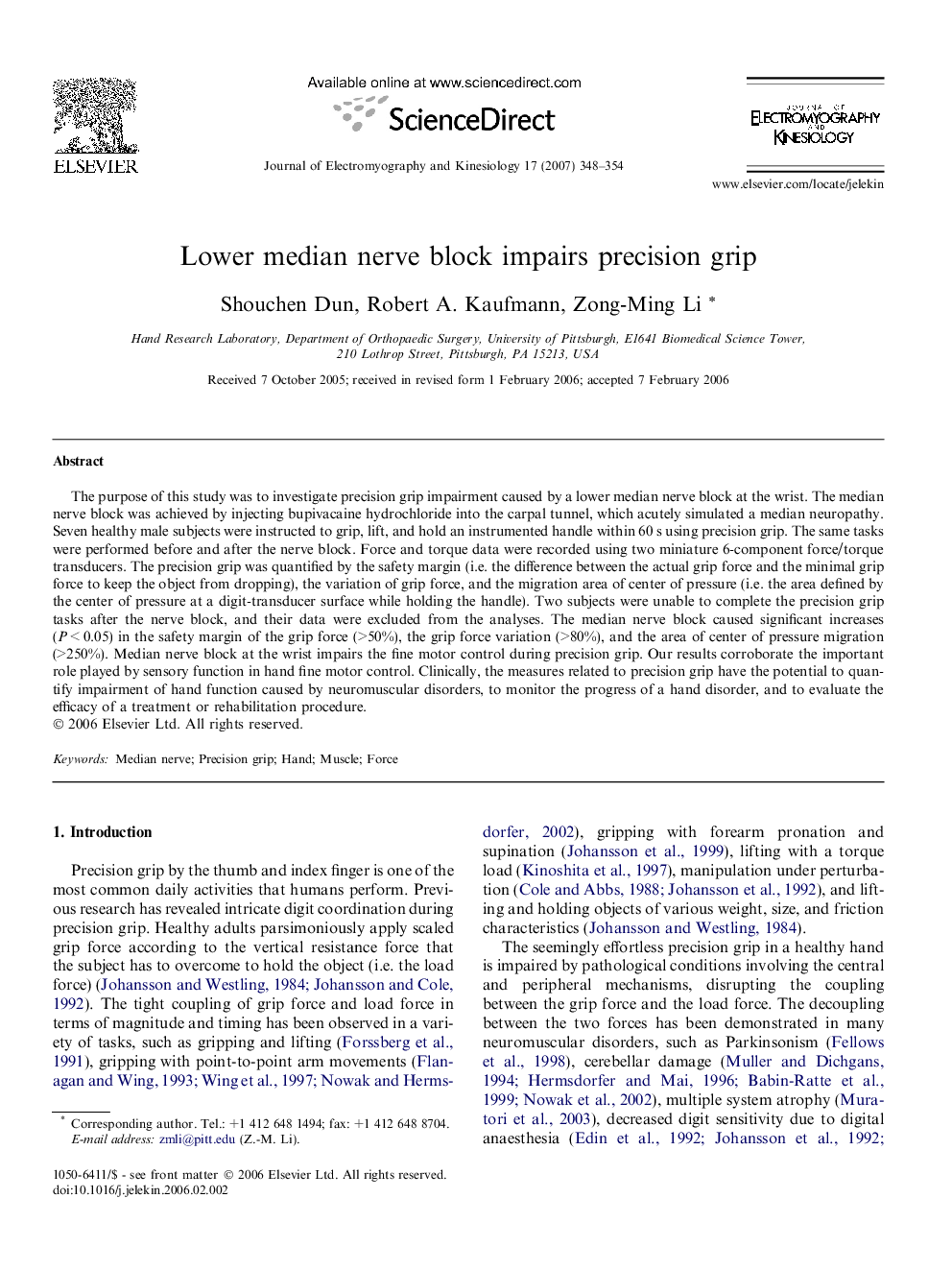| Article ID | Journal | Published Year | Pages | File Type |
|---|---|---|---|---|
| 4065595 | Journal of Electromyography and Kinesiology | 2007 | 7 Pages |
The purpose of this study was to investigate precision grip impairment caused by a lower median nerve block at the wrist. The median nerve block was achieved by injecting bupivacaine hydrochloride into the carpal tunnel, which acutely simulated a median neuropathy. Seven healthy male subjects were instructed to grip, lift, and hold an instrumented handle within 60 s using precision grip. The same tasks were performed before and after the nerve block. Force and torque data were recorded using two miniature 6-component force/torque transducers. The precision grip was quantified by the safety margin (i.e. the difference between the actual grip force and the minimal grip force to keep the object from dropping), the variation of grip force, and the migration area of center of pressure (i.e. the area defined by the center of pressure at a digit-transducer surface while holding the handle). Two subjects were unable to complete the precision grip tasks after the nerve block, and their data were excluded from the analyses. The median nerve block caused significant increases (P < 0.05) in the safety margin of the grip force (>50%), the grip force variation (>80%), and the area of center of pressure migration (>250%). Median nerve block at the wrist impairs the fine motor control during precision grip. Our results corroborate the important role played by sensory function in hand fine motor control. Clinically, the measures related to precision grip have the potential to quantify impairment of hand function caused by neuromuscular disorders, to monitor the progress of a hand disorder, and to evaluate the efficacy of a treatment or rehabilitation procedure.
